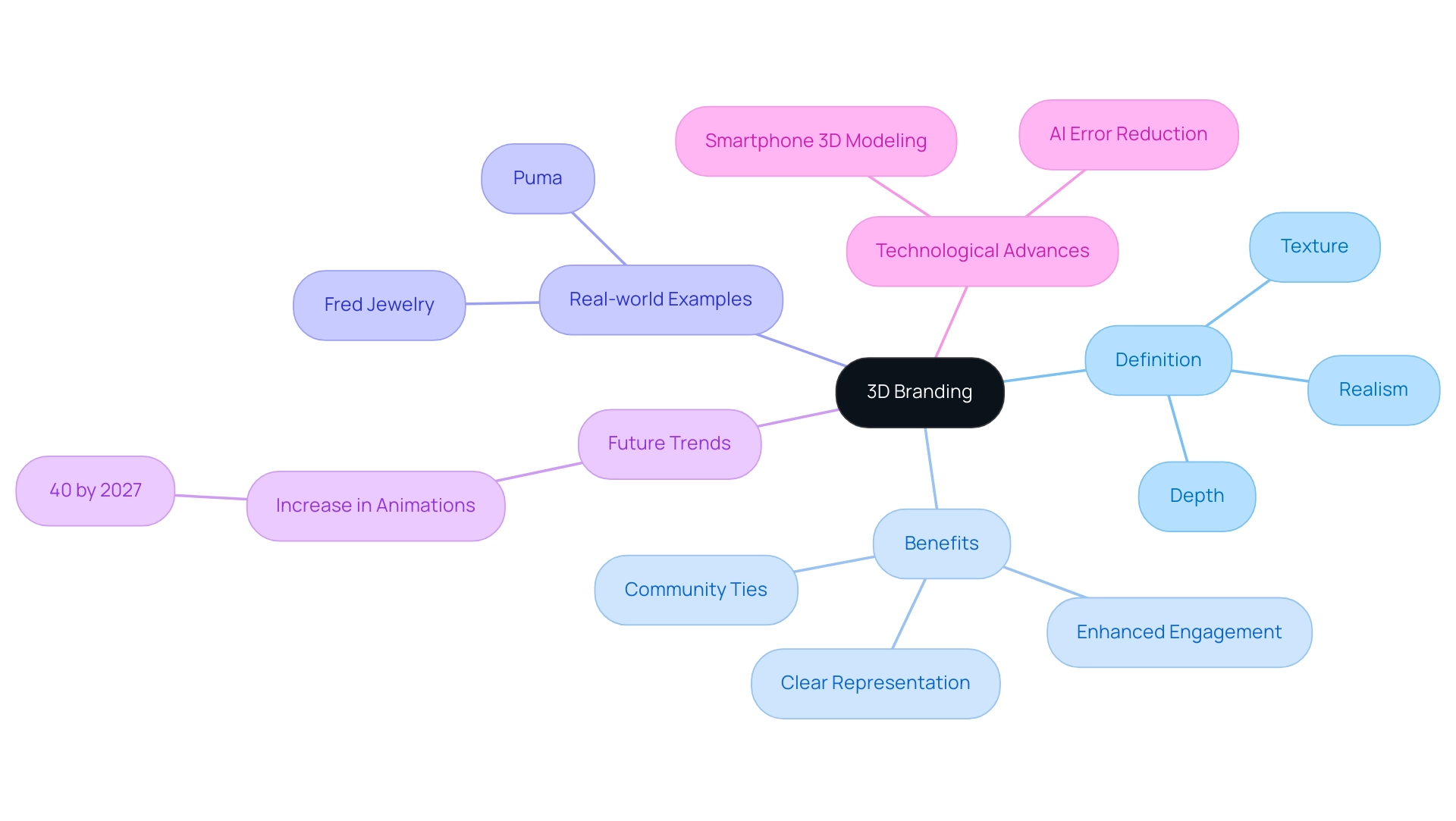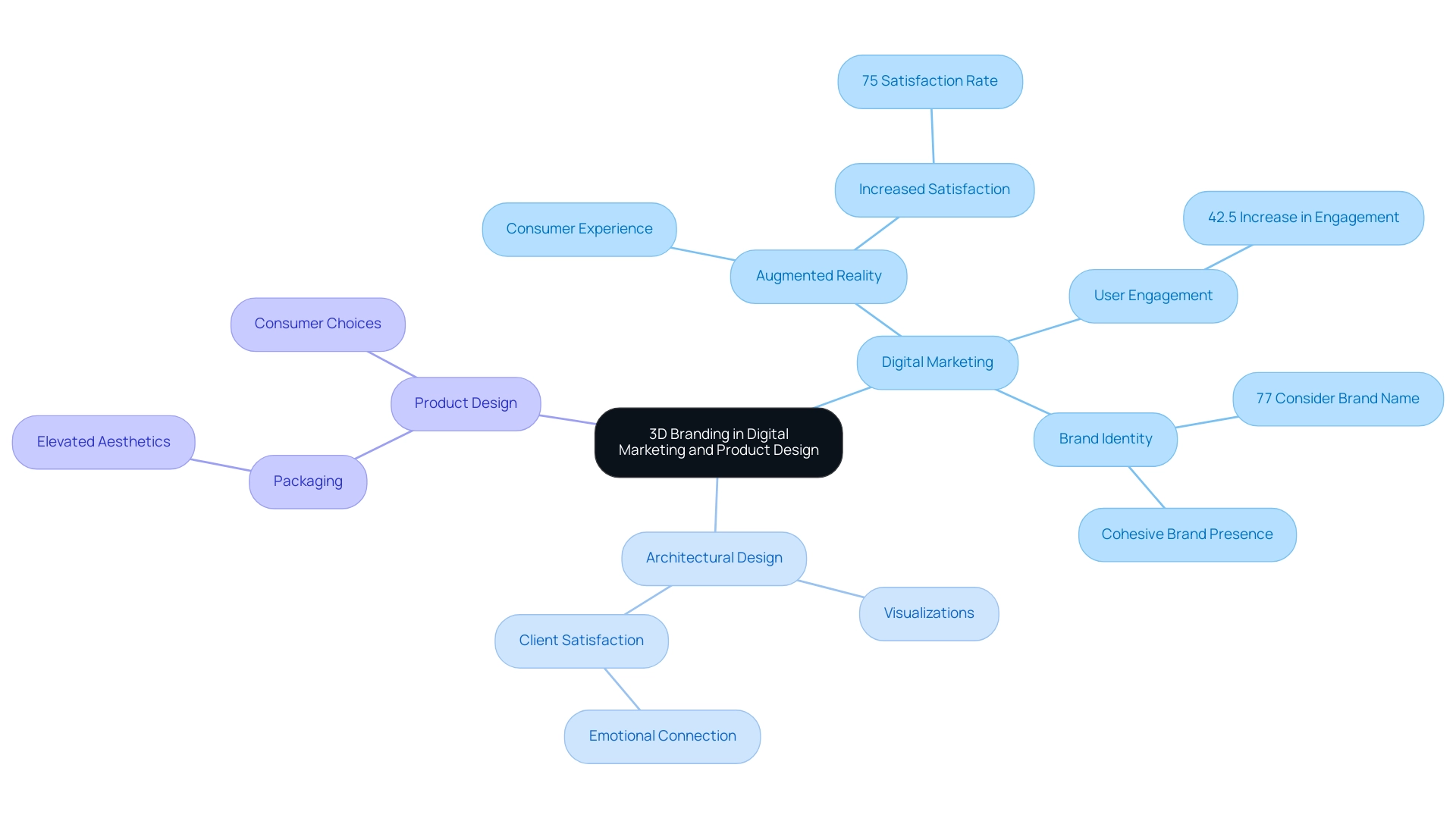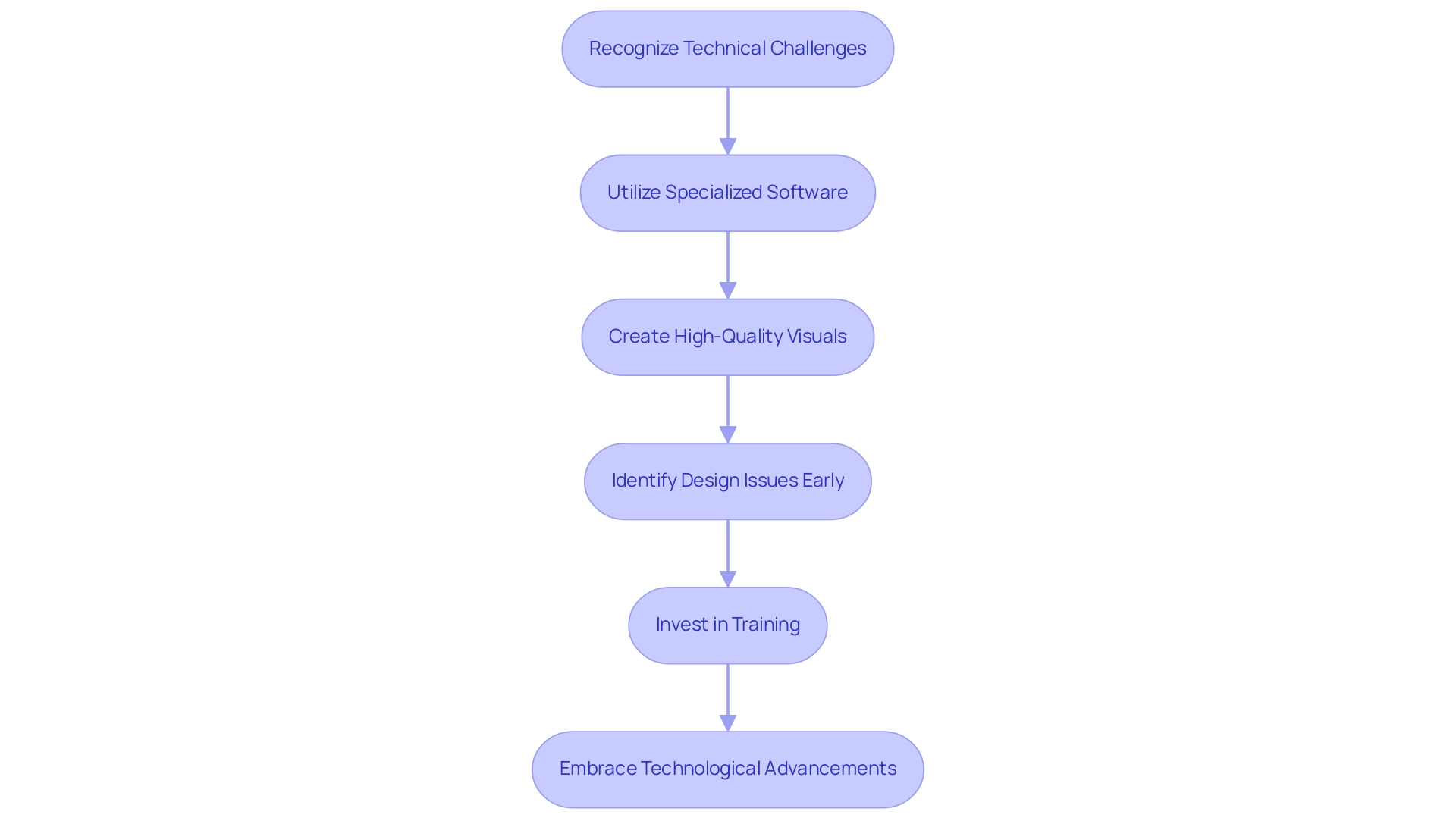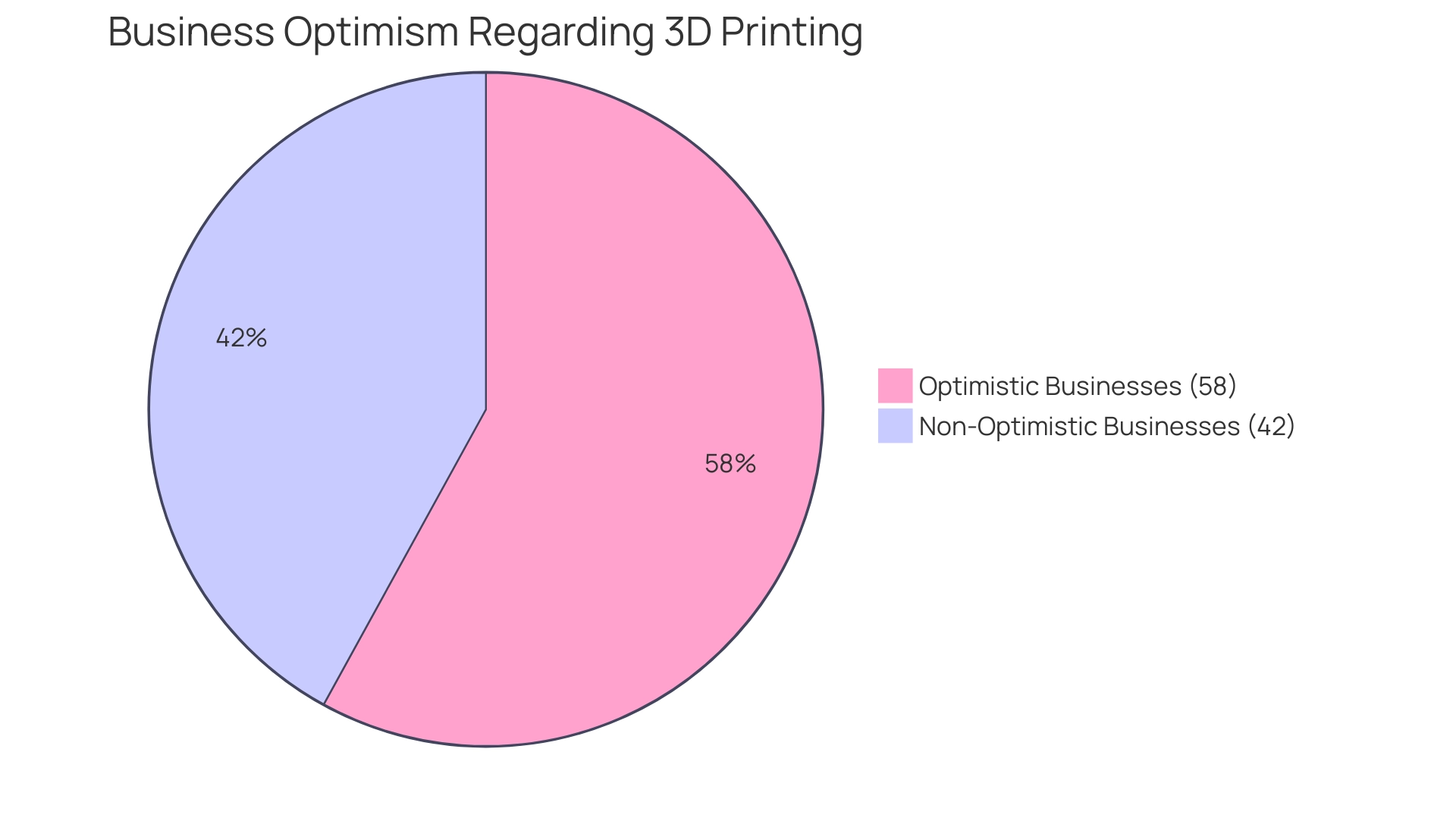Introduction
In an era where consumer attention is increasingly scarce, the emergence of 3D branding represents a transformative shift in marketing strategies. By integrating three-dimensional elements into branding efforts, companies can create immersive experiences that not only captivate but also engage consumers on a deeper level. This innovative approach transcends traditional two-dimensional designs, offering brands the opportunity to convey their identities through:
- Dynamic visuals
- Interactive packaging
- Enhanced promotional materials
As technological advancements continue to democratize 3D design tools, the implications for consumer engagement and brand recognition are profound. This article delves into the multifaceted advantages of 3D branding, exploring its impact on consumer interactions, the technical challenges it presents, and the future trends that promise to redefine the marketing landscape.
Defining 3D Branding: A New Dimension in Marketing
3D branding involves the strategic integration of three-dimensional elements into promotional efforts, ultimately fostering a more immersive and engaging consumer experience. Unlike traditional marketing, which typically relies on two-dimensional graphics, 3D techniques introduce depth, texture, and realism. This dynamic approach allows brands to articulate their identities more effectively through 3D branding, innovative packaging, and promotional materials utilizing advanced visual effects.
As Nick Martin aptly states, ‘Make sure the product is the focus of the image,’ highlighting the necessity for brands to maintain clarity in representation. Furthermore, high-quality visual renderings serve as a ‘window into the future’ of projects; they are vital tools for informed decision-making, enhancing stakeholder communication, and identifying design issues early. Significantly, by 2027, the proportion of animations in social media marketing is anticipated to rise by 40%, highlighting the increasing importance of 3D branding in capturing consumer attention.
Real-world examples, such as the case study titled ‘Better Conversions with 3D Product Configurator,’ illustrate how brands like Fred jewelry and Puma are successfully utilizing 3D branding to enhance customer engagement and shorten decision-making cycles. Additionally, the advent of technologies enabling anyone without formal training to create and share 3D models via smartphones, alongside AI tools that help eliminate errors in 3D capturing, signifies a transformative shift in the marketing landscape. In a progressively competitive market, where attention is a limited asset, 3D branding not only provides a unique edge but also plays an essential role in nurturing community ties for prospective homeowners, ultimately boosting client engagement and loyalty.
The Impact of 3D Branding on Consumer Engagement and Recognition
3D branding is essential for enhancing consumer engagement by providing an interactive and memorable experience. Personalization in 3D design is crucial, as each task presents distinct requirements and anticipations that affect both the creative process and the overall expenditure on high-quality visuals. This investment is crucial, as high-quality renderings serve as a window into the future of your project, allowing stakeholders to visualize the architectural vision clearly.
Studies indicate that brands employing 3D branding elements are significantly more likely to be remembered, as these designs produce a stronger visual impact than traditional 2D logos. For example, Coca-Cola has effectively employed 3D packaging that not only attracts attention on retail shelves but also promotes engagement. This level of engagement fosters a deeper connection and loyalty, as individuals gravitate towards brands that present unique and visually striking experiences.
Moreover, with shoppers utilizing their smartphones 49% of the time during purchases, 3D marketing helps enhance recognition in a saturated market, making it easier for individuals to remember and identify products quickly. Ari Peralta, an award-winning sensory designer and Harvard neuroscientist, underscores this by stating, ‘Studies show that 3D visualization increases customer attention and memory recall.’ Furthermore, research titled ‘3D Product Visualization and Brand Attitude’ reveals that individuals’ brand attitudes formed via interactive 3D products are more accessible and held with greater confidence than those formed through static 2D presentations.
Such insights further validate the effectiveness of 3D branding in enhancing consumer engagement and loyalty, particularly in a landscape where Roland Berger emphasizes the need for businesses to navigate challenges in consumer goods and retail. The investment in impressive 3D renderings not only clarifies the architectural vision but also enhances decision-making processes, ensuring that the endeavor aligns with the client’s aspirations. To accommodate the unique aspects of each task, we provide estimates for every job, reinforcing our commitment to meeting specific client needs.
Leveraging 3D Branding in Digital Marketing and Product Design
Businesses can strategically harness 3D branding to cultivate immersive experiences that not only attract but also retain customers through augmented reality (AR). In the realm of digital marketing, incorporating high-quality 3D animations and interactive visuals significantly enhances user engagement, evidenced by a 42.5% increase in likes, shares, and comments among marketers utilizing these techniques. Moreover, AR technology enables consumers to see products in their own spaces prior to buying, significantly altering the shopping experience—evidenced by the 75% of mobile shoppers using AR who express high satisfaction, thereby increasing their chances of online purchases.
In architectural design, the incorporation of striking 3D visualizations plays an essential role in development, offering clarity and emotional connection that affects client satisfaction. High-quality renderings act as a crucial window into the future of an endeavor, enabling stakeholders to visualize not just the structure but the life that will unfold within its walls. This emotional connection can be a decisive factor in approvals and overall project success, emphasizing how these visuals evoke emotions and facilitate informed decision-making.
Moreover, in product design, the infusion of 3D elements into packaging elevates both aesthetics and functionality.
Brands like Apple exemplify how sleek, 3D designs communicate sophistication and innovation, reinforcing brand identity in a competitive market. Significantly, 77% of consumers take a particular brand name into account when making purchasing choices, demonstrating the essential role of strong brand identity in this context. By weaving 3D branding throughout various channels, businesses can establish a cohesive brand presence that resonates powerfully with their target audience and enhances brand recognition.
As Sushmita Roy, a seasoned 3D professional, aptly states, ‘A creative focus and a knack for diverse 3D designs and technology are essential for impactful identity creation.’ This holistic approach underscores the latest trends in digital marketing, including the increasing use of AR in product design and customer engagement strategies, while exemplifying how high-quality visual renderings are pivotal in modern architectural vision and marketing strategies. Addressing key elements such as Help, Status, About, and Privacy in marketing can further enhance user experience and trust.
Navigating the Technical Challenges of 3D Branding
The implementation of 3D branding involves a unique array of technical challenges that require careful consideration, particularly within the context of architectural vision. High-quality 3D visual creation is not merely a luxury; it’s essential for effective development and decision-making. Utilizing specialized software like Blender, Autodesk Maya, and Cinema 4D, professionals can create impressive renderings that serve as a window into the future of their endeavors.
Such clarity is crucial for making informed decisions and fostering excitement among stakeholders. Furthermore, 3D visualizations play a vital role in identifying and resolving potential design issues early in the development lifecycle, thereby reducing costly changes later. They also streamline project workflows, ensuring smoother transitions from concept to completion.
However, mastering these applications requires significant time and expertise, along with a strategic approach to scaling 3D designs across various platforms to maintain quality across diverse devices and formats. A notable 71% of organizations highlight a lack of understanding as a substantial barrier to adopting 3D technologies, emphasizing the need for education and training in this area. Moreover, the growing interest in 3D printing for industrial applications reinforces the importance of staying current with technological advancements, as demonstrated by Alloy Enterprises’ recent $26 million investment in 3D-printed aluminum parts.
With the scanner software segment projected to grow at a CAGR of 21.7% from 2022 until 2030, it is essential for architects to embrace innovative tools that enhance architectural efficiency and precision. Working together with talented designers and visualizers is essential to addressing these challenges, enabling the effective implementation of 3D branding initiatives. As Tajammul Pangarkar, CMO at Prudour Pvt Ltd, emphasizes, understanding tech trends and raising awareness of technical know-how is vital for navigating these complexities.
By investing in training and suitable resources, businesses can leverage the full potential of 3D identity, ultimately improving their market presence and customer engagement.
Future Trends: The Evolution of 3D Branding in a Digital World
The evolution of technology is poised to significantly reshape the landscape of branding in 3D, with augmented reality (AR) and virtual reality (VR) emerging as transformative forces in consumer engagement. As each assignment is distinct, the importance of personalization and alterations in influencing the total expenditure on producing endeavors cannot be emphasized enough. Providing estimates for each job is essential to align expectations and ensure that the investment reflects the specific needs of the project.
Recent insights reveal that:
- 58% of businesses express strong optimism regarding the future of 3D printing, anticipating its substantial role in manufacturing and individual lifestyles.
- This optimism is underscored by the fact that the applied 3D printing segment received the most investments in 2019, highlighting the growing interest and financial backing in this area.
AR applications, for instance, empower customers to engage with 3D elements in real-time, enriching the shopping experience through immersive interactions.
Simultaneously, advancements in 3D printing technology facilitate the creation of personalized products designed for individual consumer preferences, highlighting the commitment to quality that remarkable 3D visuals signify in architectural vision. The applications of 3D rendering extend beyond promotion; they are utilized in marketing campaigns, product design, and even virtual tours, showcasing their versatility in visual media. As these technologies gain traction and accessibility, businesses that utilize 3D branding in their strategies will stand out in a competitive marketplace.
Furthermore, the introduction of specialized materials with properties such as heat resistance, elasticity, and biocompatibility, as discussed in the case study on emerging materials in 3D printing, is set to redefine 3D printing practices, thereby expanding its application across diverse sectors. Keeping abreast of these advancements and adapting branding strategies accordingly will be pivotal for achieving success in the rapidly evolving digital landscape.
Conclusion
The integration of 3D branding into marketing strategies represents a pivotal shift in how brands engage with consumers. By leveraging three-dimensional elements, companies can create immersive experiences that not only capture attention but also foster deeper connections with their audience. The article explored the multifaceted benefits of 3D branding, emphasizing its role in enhancing consumer engagement through:
- Dynamic visuals
- Interactive packaging
- Personalized promotional materials
As highlighted, brands that embrace this innovative approach are not only more likely to be remembered, but they also cultivate loyalty by providing unique and memorable interactions.
Moreover, the discussion on the technical challenges associated with implementing 3D branding underscores the necessity for expertise and investment in high-quality renderings. This is essential not only for effective project development but also for maintaining clarity in communication with stakeholders. The article also pointed to the importance of educating teams on the latest technological trends to overcome barriers in adopting 3D technologies, which can ultimately enhance market presence and consumer engagement.
Looking ahead, the evolution of 3D branding is set to be shaped by advancements in augmented and virtual reality, promising even more innovative ways for brands to connect with their consumers. As businesses navigate this rapidly changing landscape, those that prioritize the integration of 3D elements into their branding and marketing strategies will be well-positioned to stand out in a competitive marketplace. The future of branding lies in the ability to create immersive, engaging experiences that resonate with consumers, ultimately driving brand recognition and loyalty.






0 Comments